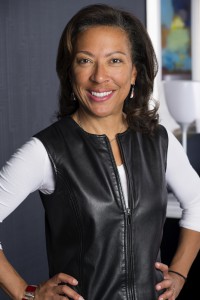
About Us
| << Back |
Message from the Chair

Tamara Fountain MD, OMIC Chair
I spent this past Mother’s Day at my grandmother’s house in Appalachian Virginia.
Granny is 89 years old and still lives independently in the house my grandfather built almost 50 years ago. She remains witty, often ribald, and cognitively sharp as a tack, but each time I return to her Blue Ridge Mountain hamlet, I notice small, but real and progressive changes in her motor abilities. She fell out of the blue in a bank parking lot several months ago. While nothing was broken, the experience shook her confidence and was a sobering reminder to our extended family of the encroaching threats to her physical and emotional independence.
As you will read in this issue of the Digest, falls have a crippling impact on the quality of life in the elderly population. We ophthalmologists are second only to geriatricians in the percentage of elderly patients we see in our practices. Add to that the visual difficulties inherent to our patient population and you have the perfect recipe for an accident—and lawsuit—waiting to happen.
It’s not just the elderly we have to worry about either. As a plastics specialist, I am commonly probing, poking, cutting, and cauterizing patients in my office procedure room. I encounter a handful of vasovagal events in a year, usually in someone under 40. Swooning doesn’t necessarily have to occur in a visibly nervous patient or even during the procedure. A 20-year-old male patient in our practice had an uneventful chalazion incision and was conversant and calm throughout the procedure. He checked out at our front desk and took the elevator to the ground floor. Only when walking to his car, did he pass out, pitching forward onto his face and breaking his jaw, nose, and several teeth. This prompted my office to establish a protocol in which all patients undergoing even the most minor procedures are advised to bring a companion, not only to drive them home, but to escort them to their vehicle and home after the office procedure.
We see patients who are old, frail, and can’t see. We do office procedures that can trigger the fight or flight response in even the most stoic patient. Falls cause life-threatening injuries and can signal the beginning of the end in an elderly person’s life. The bigger they are, the harder they fall, so it is said. Anyone who has ever seen (or worse, heard) a human fall to the ground knows it is a hard and traumatic landing no matter the body type or age.
Falls by their nature are unexpected but we can do a better job of anticipating these events. By putting certain policies and procedures in place, you can protect your patients from bodily harm and you and your practice from litigation harm.
TAMARA R. FOUNTAIN, MD, OMIC Board of Directors
Please refer to OMIC's Copyright and Disclaimer regarding the contents on this website





